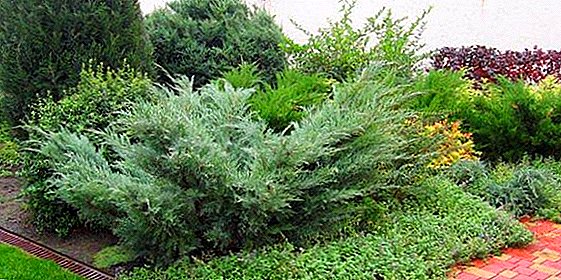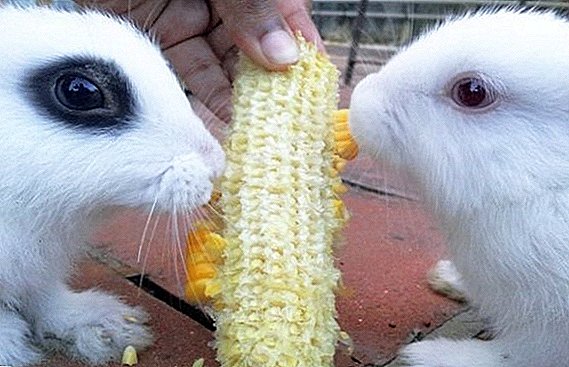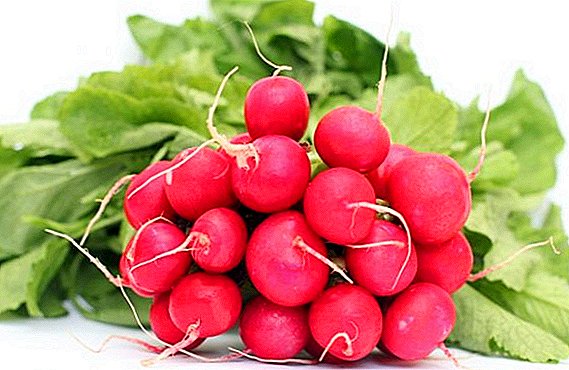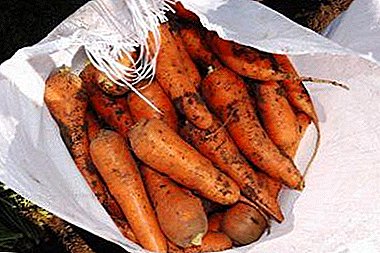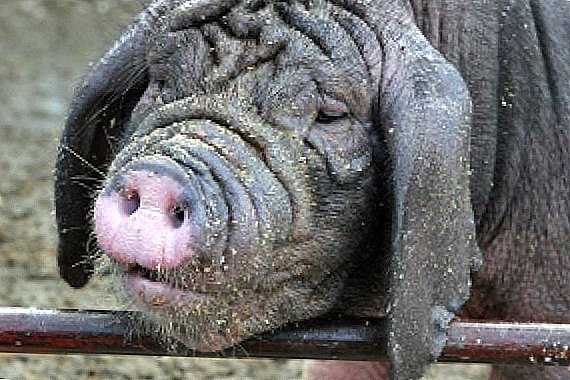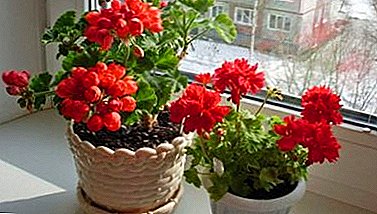 Thanks to unpretentiousness, rapid growth and ripening cucumbers are represented in almost all gardens, and in many countries.
Thanks to unpretentiousness, rapid growth and ripening cucumbers are represented in almost all gardens, and in many countries.
Since this is one of the vegetables that grows wonderfully in a greenhouse, it is one of the first to enter our diet after a long winter without vitamins. The cucumber itself, unlike other vegetable crops, cannot boast a wealth of nutrients for humans.
However, it is difficult to imagine a lot of salads and first courses without this vegetable. In order to eat beautiful, juicy and tasty fruits grown on their own, they need to be fed throughout the development. And do it by the rules, so as not to ruin the harvest. We will talk about the peculiarities of growing and feeding cucumbers in a polycarbonate greenhouse in this material.
Features feeding cucumbers in the greenhouse: how to make a schedule fertilizer
 Today, everyone resorts to growing vegetables in polycarbonate greenhouses. Their popularity is due primarily to ease of assembly and excellent qualities that are favorable for growing plants.
Today, everyone resorts to growing vegetables in polycarbonate greenhouses. Their popularity is due primarily to ease of assembly and excellent qualities that are favorable for growing plants.
In particular, the ability to pass a sufficient amount of sunlight and retain heat. In addition, when breeding cucumbers in a polycarbonate greenhouse, there is no need to pre-plant their seedlings.
When growing greenhouse cucumbers, it is important not only to maintain the correct temperature and humidity. Nutrition of nutrients is necessary for their successful development and fruiting. They are carried out during the entire process of vegetation - from the moment of planting seedlings until fruiting.
Each owner of the greenhouse by his own trial and error, applying someone else's experience and advice, he will choose the most appropriate mode of fertilizing, will prefer any kind of fertilizer and the application option. This will depend on the composition of the soil, the cultivated variety, the conditions created. However, there are general recommendations that it is desirable to take into account for all those involved in growing cucumbers in a polycarbonate greenhouse.
And first you need to know how this vegetable develops throughout its growth, during what period and in what particular substances it needs.
For the successful development of cucumber, three elements are necessary:
- nitrogen;
- potassium;
- phosphorus.
Did you know? Potassium, nitrogen and phosphorus are contained in a cucumber in the following ratio: 3: 2: 1.
 During the growing season, the most necessary for cucumber is nitrogen. During the growth of the whips he needs potassium. And when new shoots appear and at the beginning of fruiting, the vegetable needs additional feedings. nitrogen. During the fruiting period the cucumber needs in potassium and phosphorus.
During the growing season, the most necessary for cucumber is nitrogen. During the growth of the whips he needs potassium. And when new shoots appear and at the beginning of fruiting, the vegetable needs additional feedings. nitrogen. During the fruiting period the cucumber needs in potassium and phosphorus.In accordance with these needs of vegetable culture, you can make a schedule of feeding for cucumbers in the greenhouse.
Fertilizers are applied three to four times, taking into account the allowed norms. Although, if required, supplements may be more, but not more often than once every 14 days.
The first feeding is carried out before flowering. Further, various types of fertilizer should be applied on demand plants. For information on how cucumbers signal what they lack, you can read in the last section of this article. In the meantime, we will understand what types of fertilizers are and how to properly apply them for cucumbers.
Important! Cucumbers do not respond well to an oversupply of nutrients. Excessive feeding is undesirable for cucumbers in the greenhouse, as it can lead to the oppression of their growth.
Types of fertilizer for cucumbers in the greenhouse
Cucumbers fertilize with two types of fertilizers:
- organic (manure, droppings, compost, peat, etc.);
- mineral (ammonia, potash, phosphate, micronutrient fertilizers).

Variants of organic fertilizers
The best option for feeding cucumbers would be aqueous solutions. Here are a few formulations of organic fertilizers.
In a 10-liter bucket of water dissolve 0.5 liters of mullein with the addition of 1 tbsp. Spoons nitrofoski. After mixing well, add 200 g of ash (50 g of potassium sulfate), 0.5 g of boric acid and 0.3 g of manganese sulphate. Consumption - 3 l / 1 sq. m It is recommended to carry out such top dressing during flowering and formation of ovaries. It is carried out 20 days after application of the first fertilizers to the newly sprouted and given three to four leaflets of seedlings.
Did you know? It is believed that cucumber is very useful to feed wood ash (100 g / 10 l of water). It can be fertilized in any period at intervals of 10 days.If you have the opportunity to prepare organic fertilizers, then the third and fourth fertilizing can also be carried out using organic matter: bird droppings or mullein. For the third time, it is recommended to fertilize, after waiting two weeks after the second. The soil must be watered with the following composition: 2.5 Art. Spoon mullein diluted in 10 liters of water. Consumption - 8 l / 1 square. m. The same composition is used for the following feeding.
For watering plants are also used diluted in water. chicken droppings (1:15), manure (1: 6), manure (1: 8). In addition, apply infusions of green grass (1: 5). Humus is applied dry. 
Infusion of green grass can be prepared as follows: 1 kg of crushed plants of quinoa, plantain, nettle pour 12 liters of hot water, insist for three days. Before use, strain. Use for watering beds. Consumption - 2-3 liters / 1 square. m. Used and other herbs.
Not very common among gardeners, but effective feeding cucumbers in the greenhouse with yeast. This method allows you to achieve better yield. A fertilizer is simply prepared: 100 g of yeast dissolved in 10 liters of water. The infusion should ferment for one day. This mixture of plants watered at the root.
Mineral fertilizers for greenhouse cucumbers
Mineral fertilizers in the absence of organic should be used when first feeding cucumbers after planting in the greenhouse, which is carried out when the seedlings will give three or four leaves. Prepare it this way: 20 g of double superphosphate, 15-20 g of potassium sulfate (10-15 g of potassium chloride), 10-15 g of ammonium nitrate. This solution is enough to feed 10-15 sprouts.
From other mineral compounds, than it is possible to fertilize cucumbers in the greenhouse, the following is recommended:
1. For the first feeding:
- 1 tbsp. spoon urea, 60 g of superphosphate diluted in a 10-liter bucket of water;
- 5 g of ammophos to scatter on the soil and loosen;
- 10 g of ammonium nitrate, 10 g of superphosphate, 10 g of potassium salt pour 10 liters of water.
2. For the second feeding:
- 20 g of potassium nitrate, 30 g of ammonium nitrate, 40 g of superphosphate;
3. For the third feeding:
- 15-20 g of potassium nitrate diluted with 10 liters of water;
- 50 g of urea pour 10 liters of water;
4. For the fourth feeding:
- 28-30 g of baking soda dissolved in 10 liters of water.

Thus, based on the recommendations, you can make an approximate scheme of feeding cucumbers in a greenhouse, which will look like this:
1st feeding - before flowering, when the seedlings gave the first leaves - organic or mineral fertilizers, rich in nitrogen;
2nd feeding - during the formation of ovaries and the beginning of flowering (two to three weeks after the previous one) - organic fertilizers (in the absence of organic matter, minerals are used with a reduced dose of nitrogen and increased potassium content);
Recommended doses of minerals before fruiting: ammonium nitrate - 5-10 g; superphosphate - 20 g; potassium sulfate - 10 g per 10 liters of water.
3rd feeding - in the period of mass fruiting (not earlier than two weeks after the previous one) - potash, phosphate fertilizers, and nitrogen fertilizers with the addition of sulfur;
4th dressing - during the period of fruiting (14 days after the third) - with potassium and phosphate fertilizers.
Recommended doses of minerals during fruiting: ammonium nitrate - 15-20 g; superphosphate - 20 g; potassium sulfate - 20 g per 10 liters of water. 
Important! Fertilization is carried out in conjunction with irrigation. Cucumbers better fertilized after watering or rain.
Types of feeding cucumbers in the greenhouse
By the method of making the feeding are divided into:
- foliar;
- root.
Foliar feedings
When you will make your own scheme, what, in what period and how to feed cucumbers, it is important to add foliar nutrition to it - spraying the leaves with useful substances. For this method is used as ready-made compositions, purchased in specialized stores, and cooked with their own hands.
Here are some recipes for foliar dressings:
- 10 g of superphosphate, 30 g of potassium nitrate, 1 g of boric acid, 0.4 g of sulfur manganese, 0.1 g of zinc sulphate;
- 50 g of a 1.5% urea solution / 10 l of water;
- 1 tsp boric acid, 10-12 crystals of potassium permanganate dissolved in a liter of water.

Did you know? If spraying a solution of urea combined with mulching roots with needles, sawdust or humus, you can achieve long-term fruiting cucumbers.Zircon, Epin, special fertilizers for cucumbers will be suitable from ready mixes. 1 tbsp. spoon of these substances is diluted in 10 liters of water. Consumption - 5 liters / 1 square. m
Foliar nutrition of cucumbers folk remedies implies spraying infused hay. It is filled with water (1: 1), insist 48 hours. This infusion fertilized cucumbers three times at intervals of seven days.
The main advantage of spraying with fertilizers is the fastest, compared with root dressings, action, as well as less loss of useful material. However, you should know that foliar feeding - this is only an additional source of nutrients, they will not be able to fully saturate the plant with the necessary elements. 
The main indicators for making foliar feeding cucumbers in the greenhouse is the lack of one or more essential nutrients and the cold summer period with frequent cloudy weather and lack of sunlight. They are held in small doses in the evening or in the absence of the sun. Sprayed in small drops evenly on the leaves.
Important! A foliar dressing is first tested on one cucumber bush. If at the end of the day the sprayed culture did not react in any way with the appearance, then it is possible to spray the rest of the cucumbers.
Root top dressing
It is recommended to water under the root immediately after rainfall or abundant watering in the evening or in cloudy weather.
Perhaps the implementation of some root dressings and only organic or mineral fertilizers, and the possible alternation of organic matter and minerals, foliar and root dressings.
What to do if cucumbers began to lag behind in development, how to determine what the plant lacks
If cucumbers need any nutrients, they will tell you about this change in their appearance. So, the cause of the light green spots on the leaves or their yellowing, stopping the plant in growth, can be magnesium deficiency or potassium oversupply. 
The reason for slowing down the development of cucumbers becomes and iron deficiency. In this case, the leaves they acquire light color, almost turn white.
Cucumber produces fruits, shaped like light bulbs or pears (narrowed at the stem) - so he tells you that to him need potassium. In this case, it is recommended to introduce watering with a solution of ash or root and foliar spraying with a solution of potassium phosphate (1 tsp / 1 l of water), an aqueous solution of potassium sulphate.
Cucumbers, narrowed at the tip and thickened at the stalk, in the form of a hook, signal about nitrogen deficiency. When nitrogen starvation in plants also become thin lashes, small leaves, and fruits are light in color. Yellowing of the edges of the leaflets is also possible - later they twist downwards and shrivel. With this problem will help root feeding mullein or other organic matter.
The formation of your cucumber "waist" (narrowing of the fruit in the middle) indicates a sharp jump in day and night temperatures, watering with too cold water and a lack of magnesium and iron. Complex fertilizers will help solve the problem.
About calcium deficiency evidence of light yellow spots on young leaves, inhibition of plant growth, the rapid aging of the root. The fruits of these plants are small and tasteless. 
Phosphorus deficiency will affect the leaves, which first will acquire a dark color, and then wither and turn black. Scourge in plants suffering from phosphorus deficiency slows growth.
If the fruits begin to taste bitter, they lack moisture, and increase watering.
When the plants look healthy, bear fruit well with large fruits, it can be limited to one or two additional feedings.
In the event that you paid attention to the fact that the appearance of cucumbers has changed for the worse, and it is impossible to determine exactly what element they lack at this stage, it is recommended to apply complex fertilizers.
Regular and properly conducted feeding cucumbers significantly reduce the risk of plant diseases, increase yields by 10-15%, increase the size of fruits and improve their taste.



